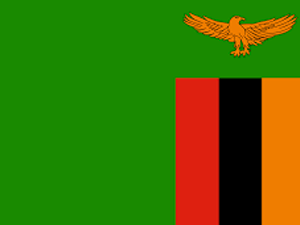 Zambia
Zambia
Differentiated Service Delivery in Zambia
Facility-Level
Coverage
%
Percent of health facilities providing less-intensive DART models.
% In Less-Intensive
Differentiated Treatment Models
%
Percent of people on ART who are enrolled in less-intensive DART models.
Multi-month ART Dispensing
%
Percent of people on ART receiving ≥ 6 months of ART at a time.
DART Model
Diversity
Number of groups for whom less-intensive DART models have been designed and implemented.
Differentiated Service Delivery Implementation in Zambia
Zambia joined the CQUIN learning network in 2017, as differentiated service delivery (DSD) was being integrated into Zambia’s National HIV Guidelines. DSD was first introduced in Zambia in 2013 in the form of single models and pilot projects offered by implementing partners, and has since become a fundamental service delivery mechanism for the National HIV program, growing in model diversity, increasing coverage for recipients of care, and reaching remote, rural areas of the country.
Zambia has a DSD Task Force—comprised of a National DSD Coordinator, members of the Ministry of Health, and additional stakeholders and implementing partners—which guides the implementation of DSD through the establishment of timelines, goals, and follow-up mechanisms, the creation of the National DSD Framework, and the solicitation of feedback and input from recipients of care, who are valued contributors to the Task Force’s efforts.
Currently, Zambia offers nine less-intensive DSD treatment models, including:
- Three facility-based individual models: three-month multi-month scripting and dispensing (3-MMD); six-month multi-month scripting and dispensing (6-MMD); and fast-track.
- Two facility-based group models: a teen club (Scholars / Tisamala) model; and urban adherence groups.
- Three community-based individual models: community ART distribution; the outreach model; and a unique health post model.
- One community-based group model: community ART groups (CAGs).
During a CQUIN-supported south-to-south visit to Eswatini, a team from Zambia observed the early-morning refill model, which has since been incorporated into the University Teaching Hospital Adult ART clinic in Lusaka, serving an estimated 1,000 recipients of care. Additionally, as the winner of the “shark tank” award from CQUIN in 2019—a competition in which CQUIN member countries developed TB/HIV services proposals for funding—Zambia has been implementing a DSD quality improvement (QI) project to follow-up with recipients of care receiving TB preventive therapy in less-intensive models.
Going forward, Zambia’s DSD Task Force is prioritizing improvements to DSD monitoring and evaluation. Additionally, following CQUIN’s 2019 QI workshop, the Task Force has been working on introducing DSD quality standards, further scaling-up, improving, and diversifying DSD models in Zambia.
Resources
Opportunities and Challenges for TB Prevention and Care: Shark Tank Presentations
M&E Framework for Monitoring of Differentiated ART Services
Taking Differentiated Service Delivery to Scale in Zambia
Zambia National Differentiated Service Delivery Framework
 Loading...
Loading...

Visit ICAP's Website for a broader portfolio of work in CQUIN network countries.
